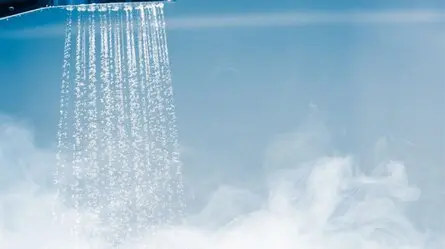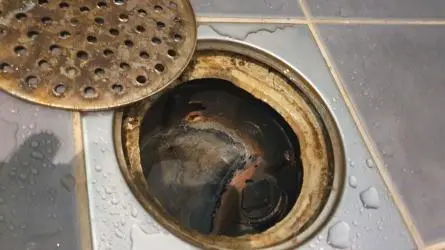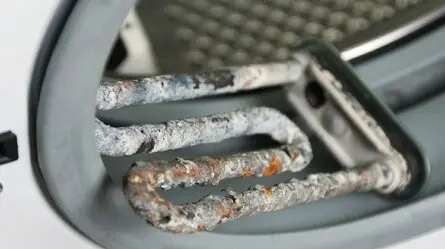Calcium build-up is one of the more easily detectable plumbing problems. The frequency of this issue depends on where you reside.
Mineral deposits can turn into an expensive headache if left unchecked. Luckily, there’s a simple and accessible way to tackle this.
Vinegar and baking soda are universal solutions for drain blockage problems, and calcium build-up is no exception. The simple process takes half an hour, making it ideal for the lime deposit problem.
How To Remove Calcium Buildup from Shower Drains
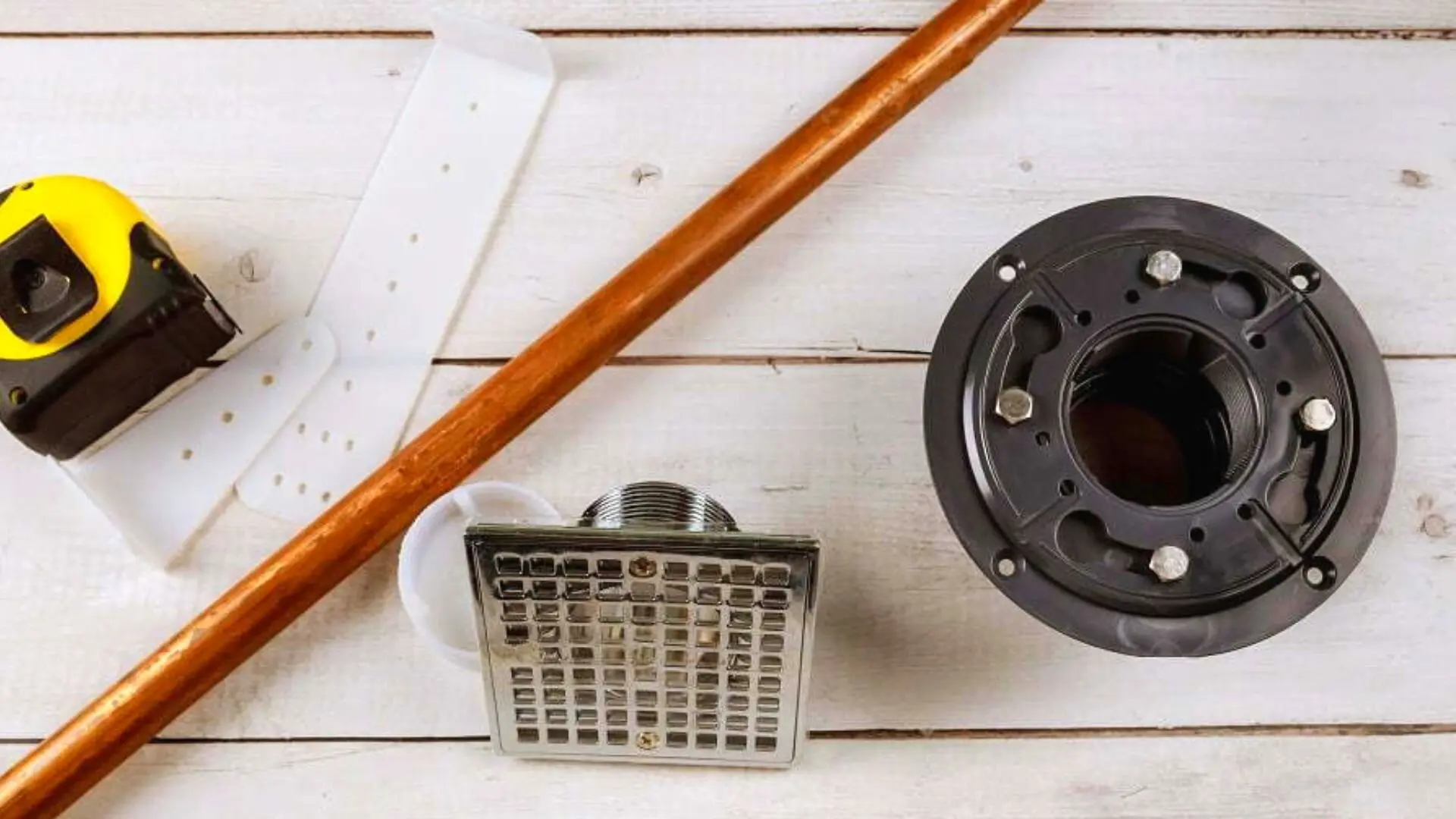
1. Heat Water In A Pan
Start by warming up a few cups of water—about three litres—in a pan. You’ll need this hot water a bit later as you progress with the steps.
2. Remove Excess Water From Drain
If your drain is completely blocked, use a plunger to remove the excess water. With a few pumps, you may be able to clear a path for the liquid to drain. Alternatively, you can use a stiff wire brush to remove the scaling.
3. Put Vinegar And Baking Soda To Use
When you use vinegar and baking soda for cleaning purposes, ensure that you have them in equal parts to maximise the mixture’s effectiveness.
Pour a cup of each into your drain, one after the other. The pouring order doesn’t matter, so you won’t have to worry about that.
4. Cover The Mixture With A Rag
After you’ve poured the vinegar and baking soda, cover the drain with a damp rag. This helps trap the carbon dioxide produced by their reaction, keeping it contained in the drain.
Wait 5 to 10 minutes while the mixture dissolves the calcium build-up in the pipes. The chemical reaction may produce fizzing sounds, signalling that the method succeeds.
5. Wash Away With Boiling Water
Finally, use the hot water you boiled earlier to rinse away any remaining deposits. This step helps clean areas that the vinegar and baking soda might have missed, finishing off the process.
You can use vinegar and a rag to clean out any stains left behind for a final touch-up.
Signs Of Calcium Buildup In Your Drain
The most common reason for calcium build-up is hard-to-tap water. Hard water contains an abundance of minerals, causing it to leave a residue in pipes and drains. Mineral deposits like calcium don’t mix into the water, and the deposits they cause will lead to plumbing problems.
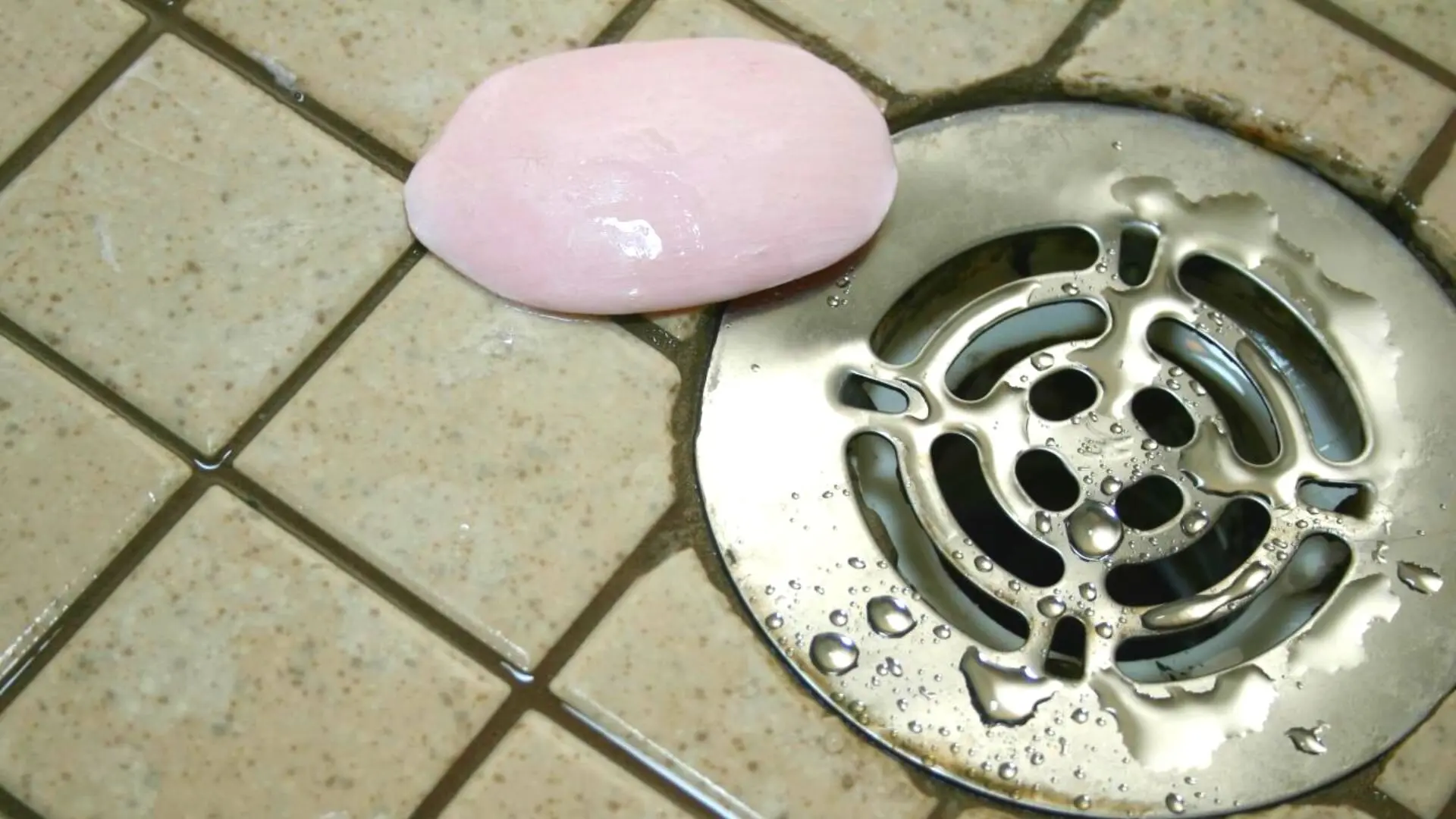
1. Blocked Drainage Pipes
Excesscalcium deposits in your pipes can lead to clogs, potentially leading to more severe plumbing issues like burst pipes. Should you encounter a blockage, the clog must be attended to once.
2. Lime Scale On Drain Covers
After hard water dries, you may encounter hard deposits on your bathroom floor or drain covers. Known as ‘lime scaling’, the deposits are a telltale sign of hard water that eventually leads to a blockage in your drain pipes.
3. Spots On Your Bathroom Fixtures
You may encounter white spots where hard water has touched your faucets. If you do, you may opt to routinely clean the drain pipes to ensure the drainage pipe stays clean and free of clogs.
Preventing Calcium Build-Up in Your Drains
While addressing calcium build-up after it forms is essential, preventing it can save you time, money, and potential plumbing damage. Over time, calcium build-up in pipes can restrict proper water flow, leading to slow drainage, blockages, and even damage to copper pipes. By taking proactive measures, you can dissolve calcium build-up before it becomes a major issue.
1. Install a Water Softener
Hard water is the primary cause of calcium build-up in pipes, as it contains high levels of minerals like calcium and magnesium. Installing a water softener removes these minerals before they enter your plumbing system, reducing the risk of limescale formation. Softened drinking water also extends the lifespan of your appliances and prevents white spots on fixtures.
2. Use a Vinegar Rinse Regularly
A simple and natural way to prevent limescale accumulation is to flush pipes regularly with white vinegar. Pouring a cup of vinegar down your drain once a month helps to dissolve calcium build-up before it hardens inside drain pipes. For better results, let the vinegar sit for at least 30 minutes before flushing with hot water.
3. Keep Your Drains Clean
Regular maintenance is key to preventing calcium build-up in pipes. Scrub your drain pipes and fixtures with a mild descaler to remove any early deposits before they harden. Avoid using harsh chemicals, as they can damage copper pipes and other plumbing materials over time. Instead, opt for eco-friendly or DIY cleaning solutions like lemon juice and baking soda, which effectively break down minerals without corroding your plumbing system.
4. Flush Pipes Regularly
Mineral deposits tend to settle in areas where water remains stagnant for long periods. To maintain proper water flow, run hot water through your pipes regularly—especially in areas of your home where taps and drains are not frequently used. This simple practice can help prevent calcium build-up in pipes and ensure smooth drainage.
Incorporating these preventative steps can greatly decrease the risk of limescale in your plumbing. They help keep water flowing smoothly, protect your copper pipes, and extend the life of your fixtures. Should you notice persistent build-up despite regular care, it might be wise to call in a professional plumber to check things out before they get worse.
Cleaning Your Shower Drain
Calcium build-up can become a nasty problem if not dealt with promptly. It can damage your plumbing, fixtures, and, in rare cases, your health.
If you see any signs of calcium build-up, you may consider having your water quality checked. If your drain clogs, you’ll have the universal drainage solution—vinegar and baking soda—to fall back on.
If this method doesn’t work, contact professional plumbing services, as it may indicate more serious underlying issues. If you are in Perth, speak to the plumbing experts at Woolf Plumbing & Gas.


